Sweet business
New book by former WSU professor examines the ups and downs of Washington’s fruit industry / Page 2
Importers from Mexico and Central America tour an apple warehouse in Yakima in 2011. Fruit growing in Washington is one of the state’s most significant industries. Photo by Associated Press


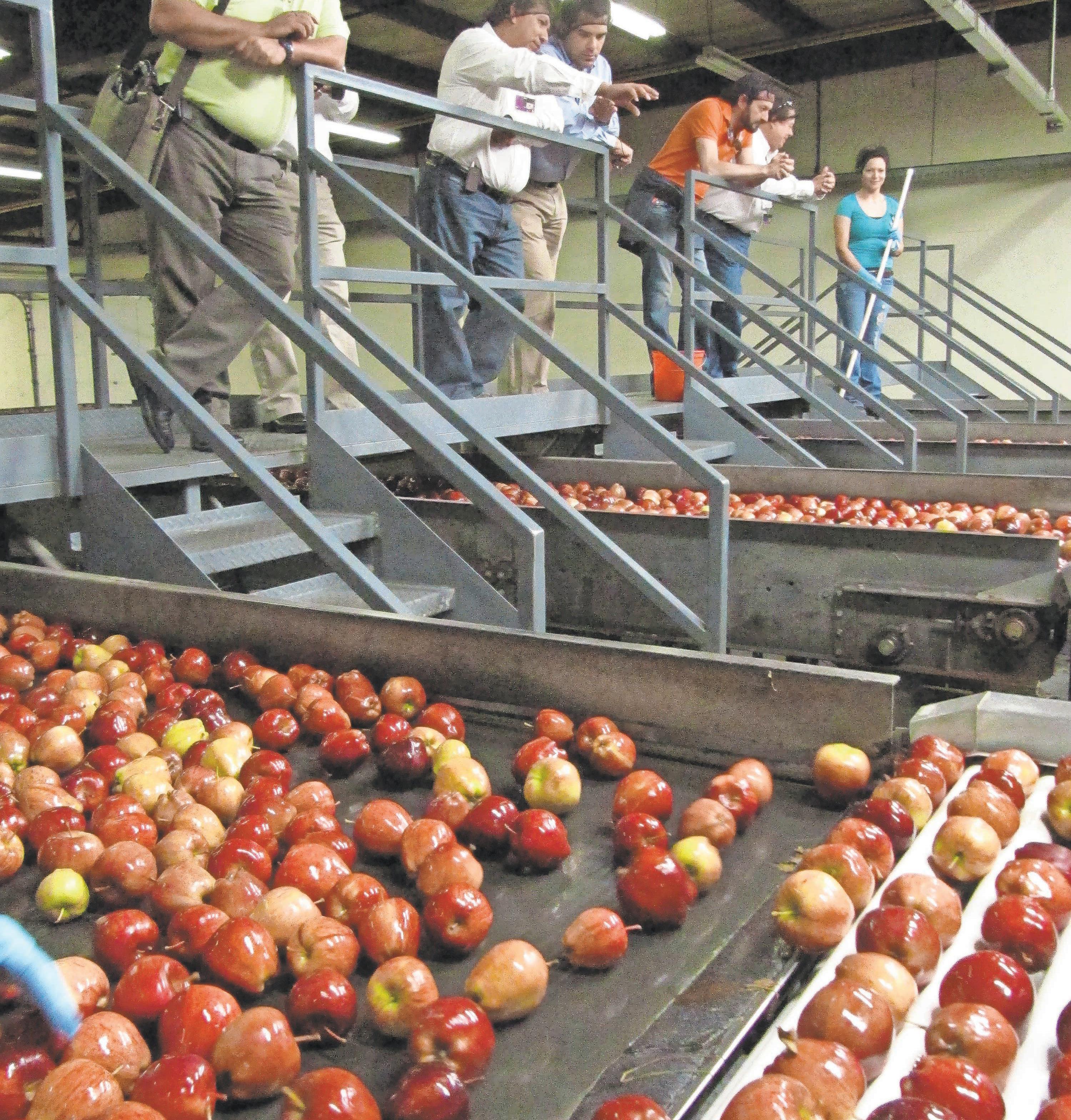
NorthwestFarm andRanch WINTER 2022 A joint publication of the Boundary Bonner Kootenai Benewah Latah Shoshone Clearwater Idaho Morrow Umatilla Union Wallowa Baker Pend Oreille Stevens Ferry Spokane Lincoln Grant Adams Whitman Asotin Garfield Columbia Walla Walla Benton Klickitat Yakima Franklin
For Washington state fruit growers, it’s Walmart that often calls the shots

Retired WSU professor Desmond O’Rourke’s latest book examines the last 50 years of Washington’s fruit market
By Kathy Hedberg For Farm & Ranch
Few people would guess that one of the biggest influencers in the Washington state tree fruit market would be Walmart.
The giant chain controls about 24% of the fruit retail trade in the U.S. and is referred to as “the gorilla within” by Desmond O’Rourke, a retired Washington State University agriculture and economics professor
who recently published a book that chronicles the ups, downs and astronomic growth of the fruit industry in Washington.
His book “Tree Fruit Trade” is published by WSU Press and available through that outlet and other book sellers.
O’Rourke, originally from Ireland, is an international marketing economist who has worked in and studied the Washington state fruit industry for more than 50 years. He has published

books, monographs, journal articles and specialized publications on the world fruit trade and served on the Washington State Governor’s Council of Economic Advisors.
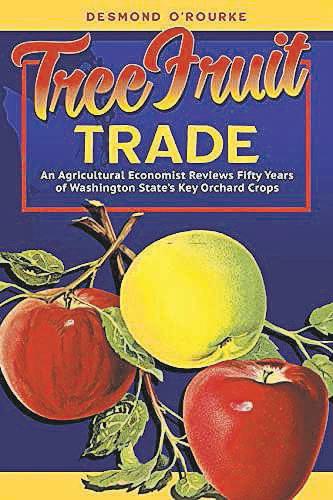
“Writing is an addiction,” O’Rourke explained about his reason for the latest book. “We can’t help ourselves.”

The book spans the past half-century in the state’s fruit industry and is aimed toward students and other entrepreneurs who might be considering going into the orchard business. It’s important, he noted, that they understand the risks and commitment such a venture requires.
“Those who don’t learn from history are in trouble,” O’Rourke said. “I’ve had a unique perspective for having worked with the industry for a long time.”
“Like Odysseus in the Greek epic,” O’Rourke writes in his opening lines, “the Washington State fruit industry has gone through many trials and
tribulations, most of which it has overcome, but all of which have taken their toll on growers, packers, marketers and processors.”

One of the first of these trials, he recounts, was the freeze crisis of 1969-70.
That winter, a deadly freeze affected several agricultural crops and many of the damaged fruit trees died. The apples that sold that season, O’Rourke said, were smaller in size and less profitable. Packing plants had difficulty managing the volume and variable quality of the harvested fruit and the industry was left to market apples of lesser quality than in the previous season.


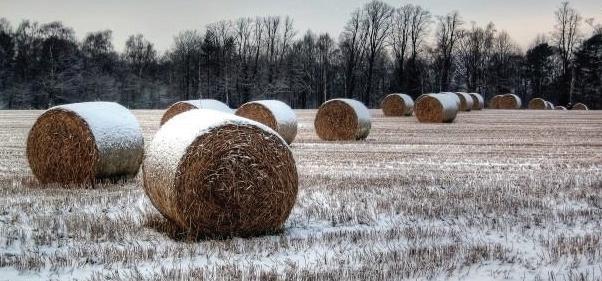
That year, the largest crop of Washington apples was 30 million 40-pound boxes. In 2019, harvest had ballooned up to 142 million boxes.
In the aftermath of that devastating year of 1970, many growers withdrew from the fruit industry or were forced out by bankruptcy.
Since then, there have been many


2 | Saturday, December 17, 2022 | MOSCOW-PULLMAN DAILY NEWS / LEWISTON TRIBUNE Northwest Farm and Ranch | WINTER 2022
Apples are ready to be sold at the famous Pike Place Market in Seattle in this file photo
Associated Press
Desmond O’Rourke
620353L_22
“Tree Fruit Trade” is the new book from retired Washington State University professor Desmond O’Rourke.
This 2011 file photo shows workers pick apples at an orchard in Tieton, Wash. The fruit business in the state of Washington has faced, and overcome, several challenges over the last 50 years, according to a new book by a retired Washington State University professor.


other challenges for growers in the orchard industry.
One has been the collective dominance of grocery giants such as Walmart, Costco, Krogers and others.
Collectively, these “big boys,” O’Rourke said, control about 40% of the retail trade and “pretty much drives what happens in our orchards.”
The competition between these retailers has often been adversarial.
O’Rourke quotes John McCliskie, head of the New Zealand Apple and Pear Board, about the transformation in the food retailing business:
“The most powerful man in the apple industry is the Walmart apple buyer; supermarkets dictate the terms of trade,” McCliskie said. “The Walmart apple buyer is one of 50 apple buyers in the world who makes the decisions about what is in the stores of all the major chains and for the millions of consumers that shop in their stores every day.”
O’Rourke also discusses the international competition from China and other fruit-producing countries.
This past season, he said, has presented more challenges to the industry.
“This has been a traumatic year because of the weather event,” O’Rourke said. “The weather was so cold during the flowering season that the cherry season was cut in half and the apple (harvest) was the lowest it’s been since 2007 because of adverse weather.”
Despite these ongoing challenges, O’Rourke expressed admiration for growers who stay in the business.
“I think their spirit of resilience –they can take these freezes and pressure from Walmart and competition from China and just keep on going,” he said, noting that during his career the fruit industry in the U.S. has tripled.
“I think the key for making good decisions in agriculture is understanding the economics of the situation,” O’Rourke said. “You shouldn’t be growing an orchard unless the revenue is greater than the cost. Because that’s one of the big problems with tree fruits. Trees do deteriorate so nowadays you have to replace them, and it’s a big expense.”
O’Rourke writes that the Washington state fruit industry is in need of a new beginning but it will require consulta tion between diverse industry members and contact with forces outside the industry and around the world.
“The fruit world has become a much more complicated place,” he writes. Industry members will have to apply new levels of ingenuity and persever ance to survive and prosper.
“The Washington state fruit industry will once again have to demonstrate that it is up to the challenge,” O’Rourke said.
Hedberg may be contacted at khed berg@lmtribune.com.
A heartfelt “Thank You” goes out to all our amazing customers. It’s our privilege to serve you!
We’re ever indebted to all who make our country the best place to call home: the hard working farmers, selfless officers of the law, brave first responders, and a military second-to-none; we owe our quality of life to you and hope you know this holiday season how appreciated

Merry Christmas & Happy Holidays from all of us at AGPRO!

MOSCOW-PULLMAN DAILY NEWS / LEWISTON TRIBUNE | Saturday, December 17, 2022 | 3 Northwest Farm and Ranch | WINTER 2022
Associated Press
Apples are packed into boxes before they are shipped from Washington Fruit & Produce Co., in Yakima in 2011.
Yakima Herald-Republic file photo
Warm fall weather a boon for Idaho wine industry
Cool spring slowed the growing of wine grapes, but conditions in summer and fall led to a promising, if late, harvest

 By Elaine Williams For Farm & Ranch
By Elaine Williams For Farm & Ranch

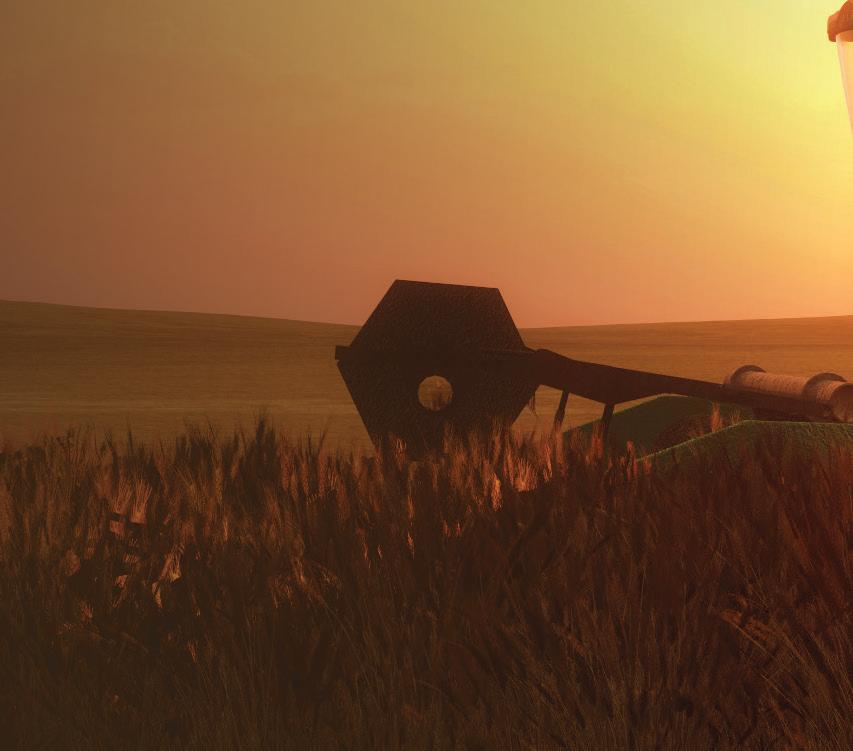
Wine grapes in Idaho benefited from warm summer and early autumn temperatures that bolstered harvests throughout the state.
That assessment comes from a news release issued by the Idaho Wine Commission about this year’s late grape harvest.

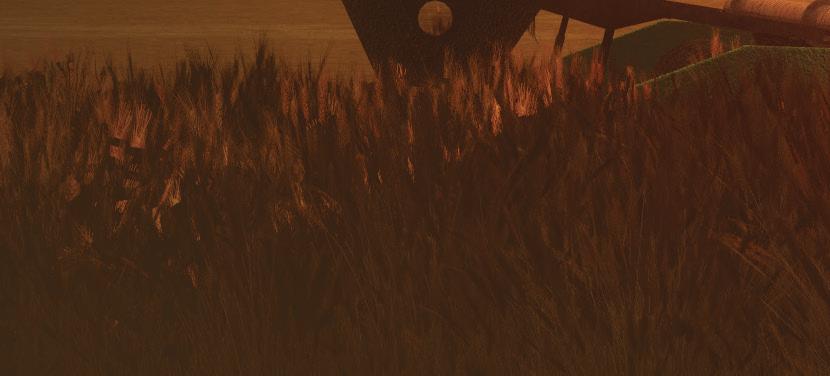

Wine grapes typically begin to be ready at the end of August and Labor Day, but this year much of the fruit wasn’t harvested until late October.
“Cellular development in grapes occurs in the spring, and we had a cool spring, leading to bigger berries and more fruit,” said Jake Cragin of Skyline Vineyards in Nampa in the news release.
Established in 2016, the area encompasses 479 square miles in Idaho and Washington where 100 vineyard acres of grapes have been planted and 16 wineries are located.
Clearwater Canyon in Lewiston had a robust harvest even though it didn’t pick a single grape until Oct. 1, a time when harvest typically would have been well under way, said Coco Umiker, winemaker and an owner, in an email.
Yields were above average after two consecutive years of being 15% or more below average yields.
“Abundant autumn sunshine and warm temperatures were crucial to finishing the ripening of our grapes,” she said.


Umiker is optimistic about the wines that will be produced from this year’s fruit.

 Frank/Farm & Ranch
Frank/Farm & Ranch

“With the warm summer and fall, the grapes were able to bake in the oven just right for really great quality,” said Cragin of what is described as the largest vineyard in Idaho on the website of Sawtooth Winery.
Rhone varietals such as syrah, viognier and grenache are among those expected to have “some of the best flavors yet,” said Moya Dolsby, executive director of the Idaho Wine Commission.
“Our wine growers struck a beautiful balance this year for a strong harvest, considering the weather ups and downs,” Dolsby said.
Trends in the Lewis-Clark Valley American Viticultural Area that includes portions of north central Idaho followed what the rest of the state experienced.
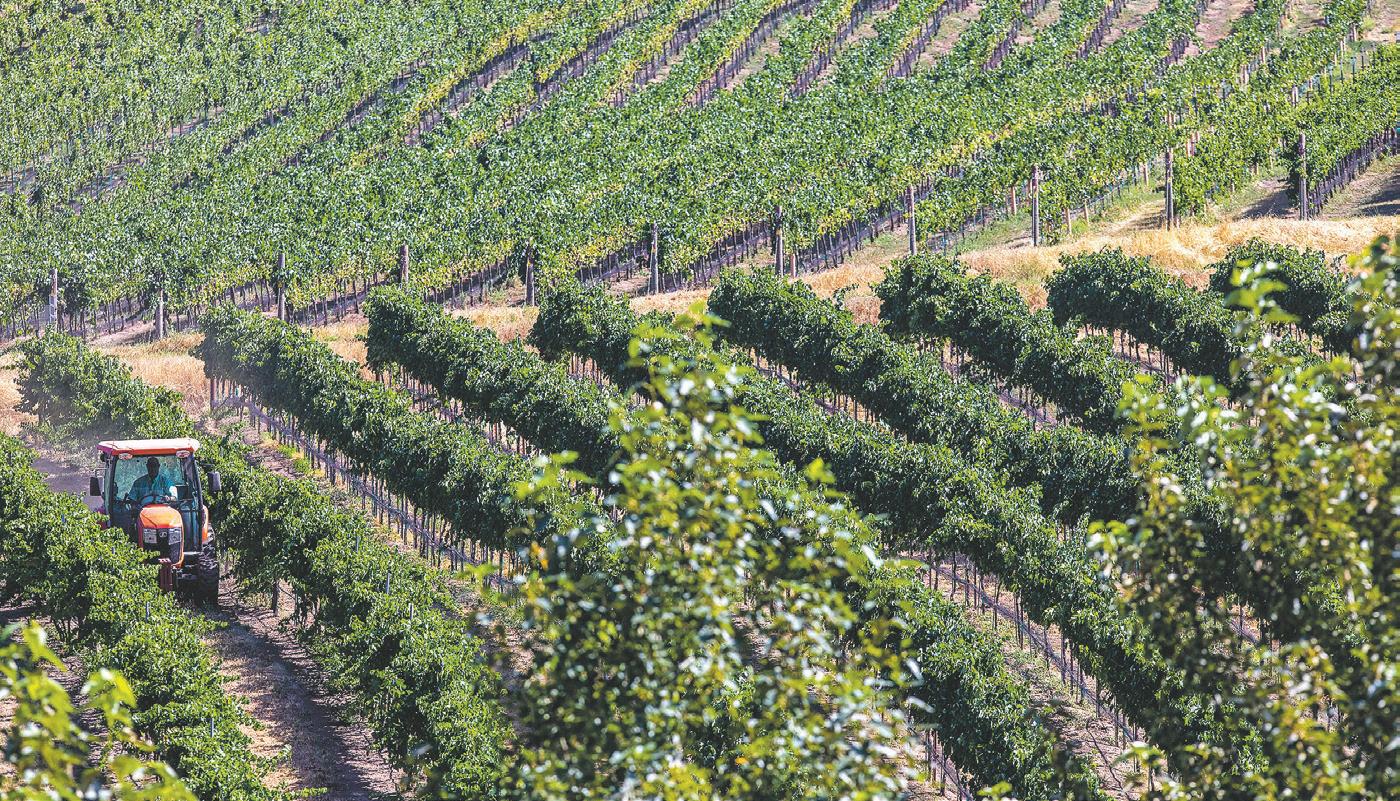
“Vintages like this one, defined by long, slow and steady ripening have historically created some of our most celebrated wines,” she said. “The wines this year have vibrant flavors and aromas with some moderate alcohols and age-worthy acidity.”
Rivaura Winemaker and Vineyard Manager Vince Hewett had a similar take.

“The warm fall helped the Bordeaux varietals hang on the vine and ripen to above-average quality,” he said. “The 2022 harvest should be plentiful with a variety of wines that have well-rounded tannins and a depth of color.”
Williams may be contacted at ewilliam@lmtribune.com or (208) 848-2261.
— MOYA DOLSBY,
WINE COMMISSION EXECUTIVE DIRECTOR
4 | Saturday, December 17, 2022 | MOSCOW-PULLMAN DAILY NEWS / LEWISTON TRIBUNE Northwest Farm and Ranch | WINTER 2022
A worker drives through the orchards near the Colter’s Creek Winery in late August. The wine grape harvest in Idaho came late this year, but the crop that was gathered looks promising, according to those in the industry.
August
“
Our wine growers struck a beautiful balance this year for a strong harvest, considering the weather ups and downs.”
Here for the hard workers, early risers, and extra milers. p1fcu.org | 208.746.8900
IDAHO
The goal is high-quality beef

New Idaho County extension agent Meranda Small comes from a cattle background and is making that a focus in her new position
consumers today are especially interested in where their food comes from and how it got to their table.
“For a while, there was a lot of misinformation out there. So our program helps producers tell our story accurately and with science-backed information. We want consumers to have confidence in us because we’re proud of the product that we create.”

Besides her focus on beef cattle, Small said she will also be involved in 4-H events throughout the region. Livestock field days for 4-H youth have already been scheduled for March in Asotin County and Moscow.
As far as expertise with species other than beef cattle, Small said she is not fluent enough in those areas
to focus on them yet. If asked, she will likely help people find quality resources for those subject areas elsewhere.


For the time being, Small said she is enjoying getting to know the local producers and spending time with them.
“That’s my favorite thing – making sure they have what they need. You have to love what you do because there’s no guarantee. These people pour their whole selves into this industry, so if I can get to work with them and give them some knowledge and historical awareness, that’s my favorite thing. And I get to continue learning, as well.”
Hedberg may be contacted at khedberg@lmtribune.com.
 By Kathy Hedberg For Farm & Ranch
By Kathy Hedberg For Farm & Ranch

Idaho County’s new University of Idaho extension agent has a mission to help beef cattle producers raise quality animals and to assure consumers they can trust the product. Meranda Small assumed the Idaho County extension position in September following the retirement of longtime agent Jim Church.
Like Church, Small’s area of expertise is beef cattle production.


“In Idaho County there’s a lot of cattle here and it makes sense,” Small said. “We’ve got really high-quality soil and good grass. My biggest focus area, when I’m thinking about beef cattle, is ensuring that producers succeed with their operational goals and creating calves that are ready to go into the feedlot environment.”
Small, who owns a cow-calf operation near Grangeville with her husband, Wyatt, is an Idaho County native. She grew up on the family’s wheat farm and spent her youth working on the farm and participating in
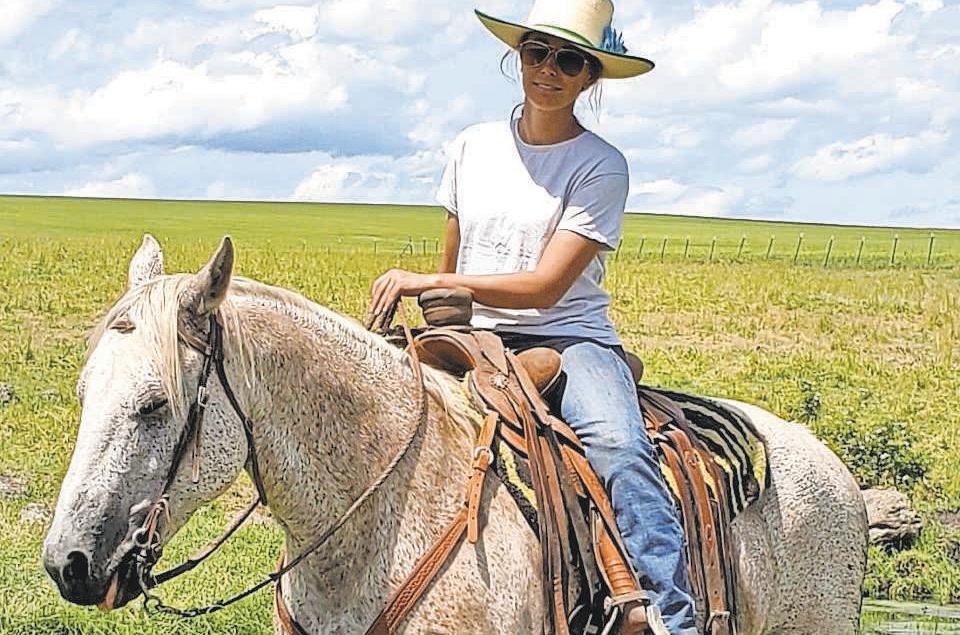
Idaho County 4-H programs.

She graduated from Grangeville High School in 2004 and studied agriculture production at Blue Mountain Community College in Pendleton, Ore., before returning to Idaho and completing a graduate program in agriculture education and extension at the University of Idaho.
She worked for seven years in Oneida and Bingham counties in southeastern Idaho before returning with her husband and two young children to Grangeville.

Extension agents frequently have a specialized area of expertise and serve a wider area than only their hometowns. Small said she expects to be traveling the whole district as far north as Sandpoint to present beef schools and quality assurance training.
“Beef quality assurance is a guarantee to consumers that the product we are raising is going to taste good, be nutritious and safe,” Small said. “It’s kind of our promise to consumers that this is a good, quality product.”
That’s crucial, she added, because
 Meranda Small, a 2004 Grangeville High graduate, is the new extension agent in Idaho County for the University of Idaho. Her area of expertise is beef cattle production.
Courtesy photo
Meranda Small, a 2004 Grangeville High graduate, is the new extension agent in Idaho County for the University of Idaho. Her area of expertise is beef cattle production.
Courtesy photo
MOSCOW-PULLMAN DAILY NEWS / LEWISTON TRIBUNE | Saturday, December 17, 2022 | 5 Northwest Farm and Ranch | WINTER 2022 620 Thain Road, Lewiston (208) 746-6447 2275 Nursery St., Moscow (208) 883-3007 BLUE MOUNTAIN AGRI-SUPPORT, INC. 603708L_21
Meranda Small
‘It’s a disaster’
Drought dramatically shrinking California farmland
State has lost 10% of its agriculture land over the last three years because of prolonged drought conditions
By Ian James Los Angeles Times
In the fall, rice fields in the Sacramento Valley usually shine golden brown as they await harvesting. This year, however, many fields were left covered with bare dirt.
“It’s a disaster,” said rice farmer Don Bransford. “This has never happened. Never. And I’ve been farming since 1980.”
Bransford typically farms about 1,800 acres of rice. But the drought was so severe this year that water deliveries to area farms were drastically cut.
Bransford, board president of the Glenn-Colusa Irrigation District, didn’t
plant a single acre. Many other farms went idle as well.
California has just gone through the state’s driest three-year period on record, and this year the drought has pushed the fallowing of farmland to a new high.
In a new report on the drought’s economic effects, researchers estimated that California’s irrigated farmland shrank by 752,000 acres, or nearly 10%, in 2022 compared with 2019 – the year prior to the drought.
That was up from an estimated 563,000 acres of fallowed farmland last year.
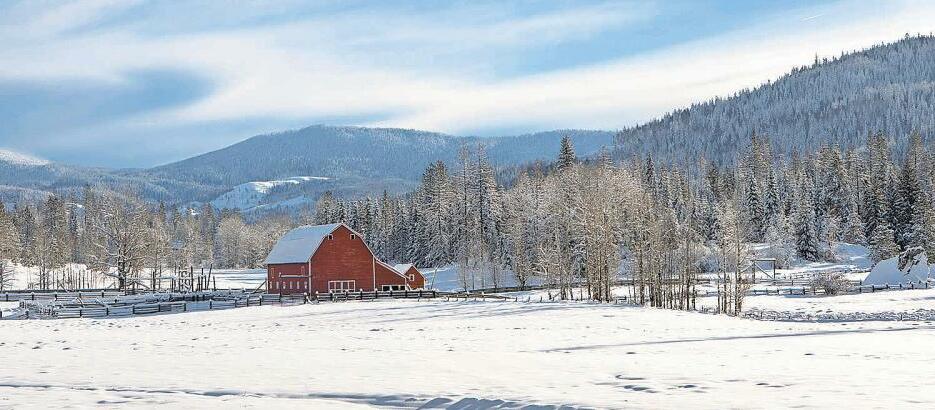
Nearly all the farmland that was left unplanted and dry falls within the

Central Valley, and a large portion of it in the valley’s northern half.
The state’s main rice-growing regions in Sutter, Colusa and Glenn counties were hit particularly hard, the report said, with about 267,000 acres fallowed this year.
“The severity of the ongoing drought has been unprecedented for the Sacramento Valley,” said Josué Medellín-Azuara, a water resources economist and associate professor of civil and environmental engineering at UC Merced.
“It’s been more severe over the past year, and you have the cumulative effects of the previous dry years.”
Medellín-Azuara and colleagues from UC Merced, UC Davis and the Public Policy Institute of California prepared the report for the California Department of Food and Agriculture.
They estimated changes in the acreage of irrigated land by surveying irrigation districts, analyzing water data and reviewing satellite data.
They found that water deliveries in the Central Valley were cut by nearly 43% in both 2021 and 2022.
Growers partially made up for those reductions by pumping more groundwater.
Gross crop revenues fell $1.7 billion, or 4.6%, this year. Revenues of the state’s food processing and manufacturing industries declined nearly $3.5 billion, or 7.8%.
An estimated 12,000 agricultural jobs were lost, representing a 2.8% decline.
“Those farmworkers suffer the most during the droughts,” Medellín-Azuara said.
The researchers said California lacks sufficient programs to assist laborers who lose farm jobs.
They said it’s crucial “to identify and assist communities that rely on seasonal and permanent agricultural jobs that are vulnerable to drought.”
The amount of farmland left dry this year surpassed the peak of fallowed land during California’s last drought
from 2012 to 2016.
Medellín-Azuara said the situation could have been worse this year if reservoirs that supply the San Joaquin Valley hadn’t risen somewhat with rains in late 2021, making more water deliveries possible.
Still, the losses for agriculture were severe.
“It’s a really remarkable hit,” said Daniel Sumner, a professor of agricultural economics at UC Davis.
He said the effects on the farm economy in the Sacramento Valley, which typically has more water and fares better than the San Joaquin Valley, were especially pronounced, representing the biggest contraction he has seen in the region in decades.
High milk prices helped mitigate the overall decline in farm revenues, Sumner said.
And farmers made various adjustments to cope with reduced water supplies.
“We cut back on cotton. We cut back on some other crops. And the fruits and vegetables that we’re most known for, we continue to produce most of them,” Sumner said. “California agriculture is incredibly resilient.”
But pressure on agriculture is increasing as climate change unleashes more intense and longer-lasting droughts, as well as heat waves that can harm crop yields.
During the past two years, growers have dramatically increased groundwater pumping in the Central Valley, including many areas where water levels are declining and a growing number of household wells have gone dry.
The researchers estimated that farms have pumped 27% more groundwater this year than in 2019.
Such heavy reliance on wells will face new limitations in the coming years.
Local water agencies across the San Joaquin Valley are required to begin reining in overpumping under California’s Sustainable Groundwater Management Act, which requires them
6 | Saturday, December 17, 2022 | MOSCOW-PULLMAN DAILY NEWS / LEWISTON TRIBUNE Northwest Farm and Ranch | WINTER 2022
WETHINK BEYOND INSURANCE Generationsofhard work Hope forthefuture. Astrategicplan toget youthere. Andpartners to help you reducethe riskalongthe way It’snotjustaboutinsurance. LT-587386 ServingInlandNorthwestCommunitiesSince 1923 www.stonebrakermcquary.com Clarkston 6165thStreet Clarkston, WA 99403 509.758.5529 Spokane 1401E.57th Avenue Spokane, WA 99223 509.755.4500 Genesee 142 WalnutStreet Genesee,ID83832 208.285.1661 Craigmont 116 W. Main Craigmont,ID83523 208.924.5232 StonebrakerMcQuaryisanequalopportunityemployer There’sa way to doitbetter. FINDIT. -ThomasEdison CustomizedInsurance& RiskReductionStrategies FARMRANCHCROPHOMEAUTOMEDICAL
to balance water use with available supplies by 2040.
Researchers have projected that meeting the law’s sustainability rules will require that vast areas of farmland be taken out of production permanently.
For now, farmers with wells have been able to rely on aquifers.But in areas where rice farms have long depended solely on flows from the Sacramento River, many growers have no wells. Without water flowing in canals, farmers were left without options.
California harvested the state’s smallest rice crop since the severe drought of 1977-78, according to the U.S. Department of Agriculture.
“We typically plant about 100,000 acres of rice in our district. And this year, we planted 1,000 acres,” said Thad Bettner, general manager of the Glenn-Colusa Irrigation District. “It’s just a massive, massive impact.”

With the Sacramento River watershed parched and Shasta Lake at low levels, wildlife officials dedicated some water to try to help the spawning of endangered winter-run Chinook salmon, which contributed to the cuts in water deliveries to farms, Bettner said.
“Unfortunately, those protections for winter-run didn’t help the fish,” Bettner said. “We’re seeing, basically, very few of them survive.”
Now many rice farmers are feeling uneasy about what might happen if the drought persists next year, Bettner said.
“We’re very concerned about how many small family farms that we have in our district continue to stay in business,” he said.
Bransford has crop insurance and can receive compensation for the rice he couldn’t plant.
He has kept a couple of employees on his payroll. But much of the area’s farming economy has shriveled, leaving many laborers suffering.

“It’s devastating,” Bransford said. “The greatest impacts are to the farmworkers.”
“They’re an embedded, important part of our community,” he said. “And the problem we have as owners of farms is if these people leave, there’s no replacement.”
California farms primarily produce short- and medium-grain Japonica rice, which is used for sushi and other dishes.
The rice is sold domestically and also exported to Asia and other parts of the world.
The area’s vast rice fields have long provided habitat for migrating birds, which over the last century have lost most of the natural wetlands where
they once stopped to rest and feed.
Usually, after growers harvest their crops, the fields are left with choppedup rice straw and fallen kernels.

The farmers will again send water flowing to fields, attracting geese, ducks and other birds, which arrive in large flocks to feed.
With many fields now bone dry, Bransford and other farmers say they’re concerned about how the birds and other species will fare.
The California Rice Commission said this year’s rice crop is estimated to be about half the size of a typical harvest.



The organization said the drastic water cuts have also dried up what were once reliable habitats for more than 200 wildlife species, among them migrating ducks and geese, which typically depend on rice fields for a large portion of their food during the fall and winter.
Tim Johnson, the commission’s president and CEO, said the lack of water now threatens millions of wetland-dependent birds, and could affect the migratory path along the Pacific Flyway.
He said while the long-term environmental effects are unknown, rice farmers have been working with government agencies and conservation groups to provide as much habitat as possible and “assist in tracking the impacts this historic drought will have on waterbirds, with the goal of using that science to better help the Pacific Flyway in the years ahead.”
On the west side of the Sacramento Valley, waterbirds typically move between wildlife refuges and rice fields.
Because the local wildlife refuges had their water deliveries cut this year, Bransford said, the irrigation district sold the government additional water to help nourish the habitats.
With fewer rice fields to turn to, the birds will likely be concentrated where there is water, Bransford said.
And such concentrations of birds can lead to outbreaks of avian botulism or other deadly illnesses.
A wave of avian flu has already left millions of birds dead in parts of North America, and has been circulating in California.
“Hopefully, it will not have an impact on the waterfowl. But there is potential for that,” Bransford said.
Because migrating birds are also encountering parched landscapes elsewhere, he said, “it’s really going to be difficult on them.”

While the dry fields show the drought’s immediate toll, farmers expect it could take a year to determine how severe the ecological ripple effects turn out to be.
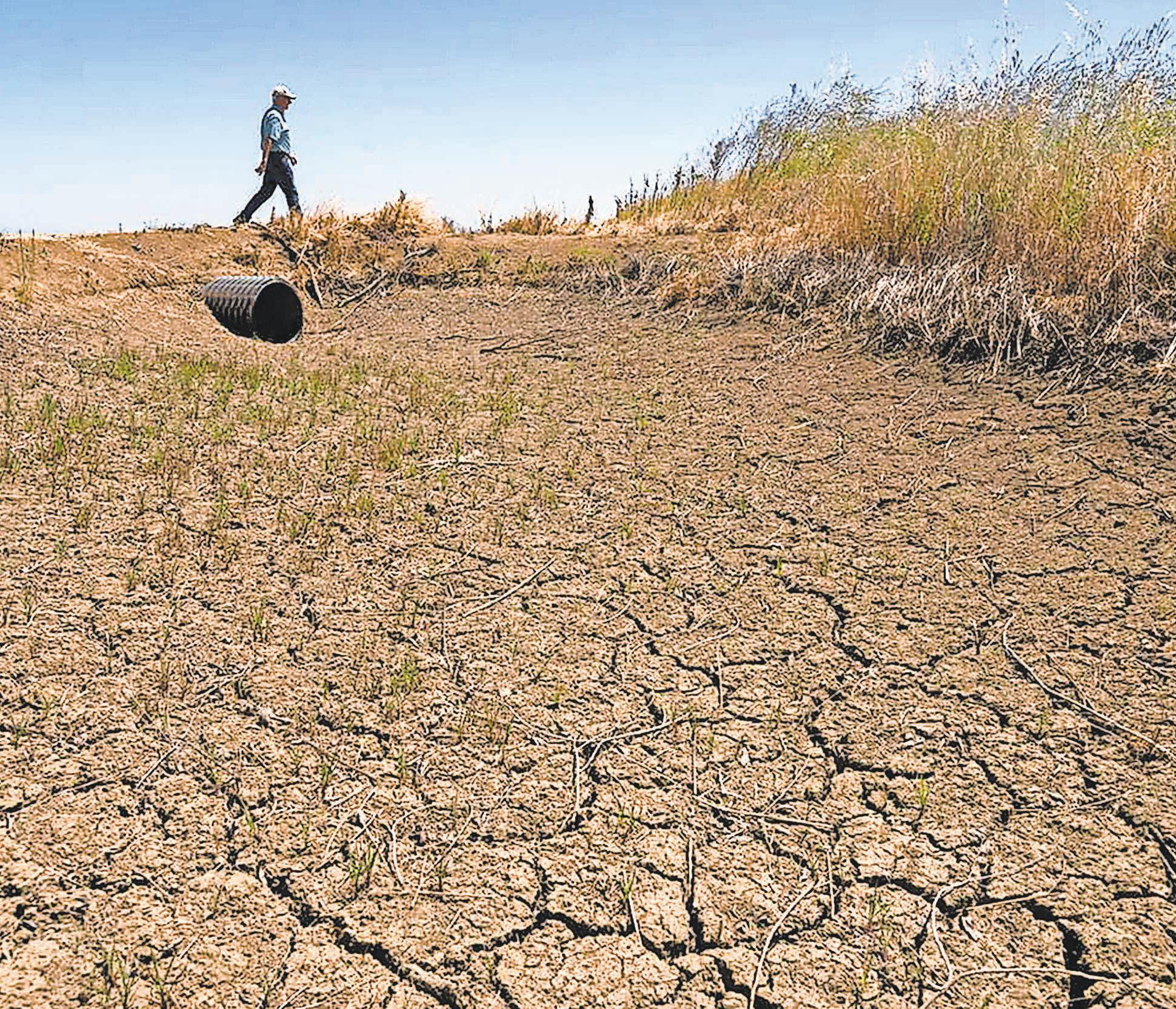
MOSCOW-PULLMAN DAILY NEWS / LEWISTON TRIBUNE | Saturday, December 17, 2022 | 7 Northwest Farm and Ranch | WINTER 2022
THANK YOU FOR FEEDING THE WORLD! We want to express our appreciation to the regional agricultural community, the hard working people who fill our nation’s pantries. Your hard work and concern for the environment keeps our land fertile, productive and safe. It is your hard work that has enabled our proud nation not just to feed its own, but to send food abroad and ease hunger in other parts of the world. Thank you for the vital fruit of your labor! (208) 882-4534 1225 E. 6th, Moscow www.shortsfuneralchapel.net 620844L
Rice farmer Don Bransford walks past a dry ditch that usually brings water to his 1,800 acres of rice fields near Williams, Calif. Sacramento Bee
Piecing together a beautiful friendship
Spokane Valley woman’s desire to paint a barn quilt for her neighbor leads to a close bond
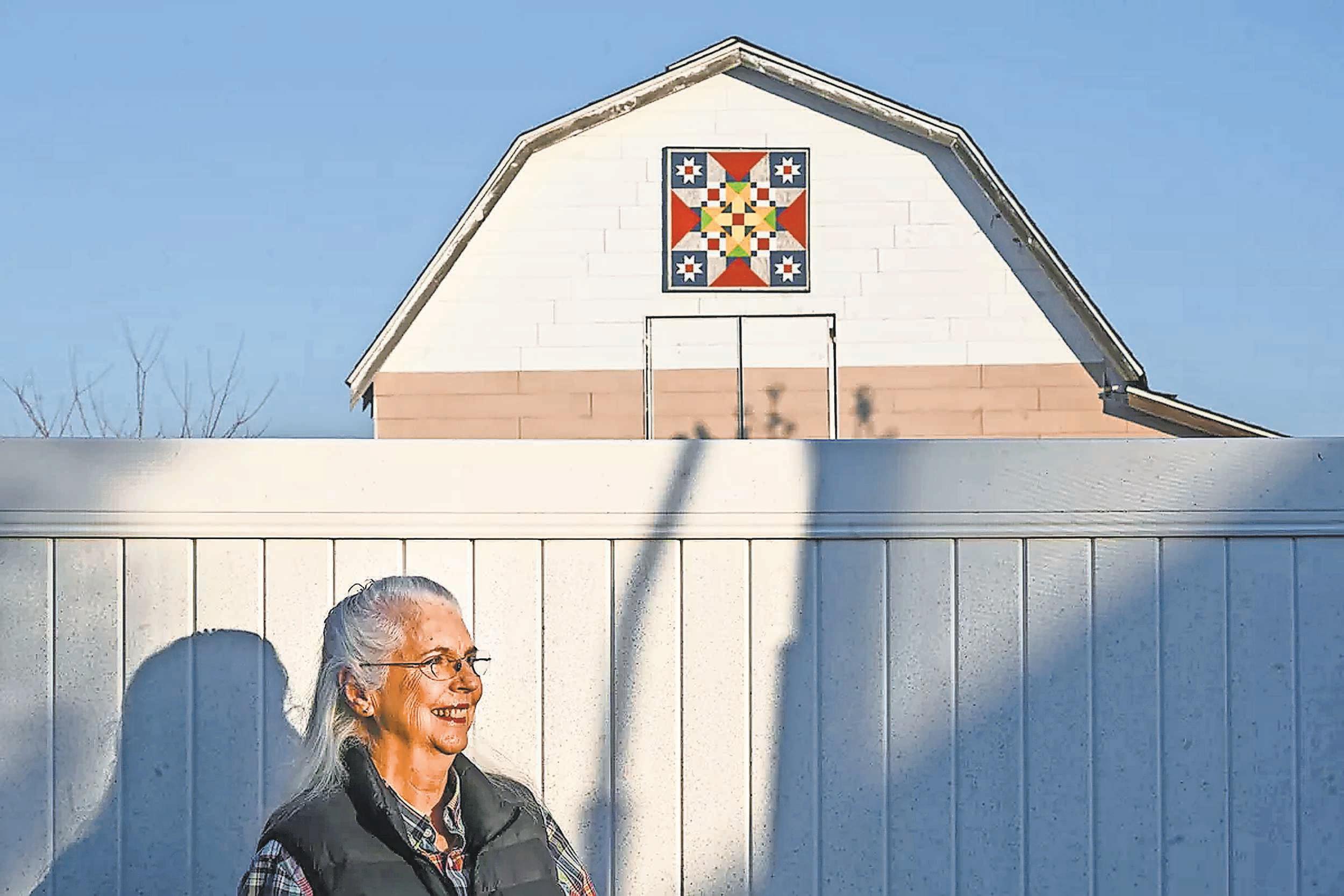 By Cindy Hval Spokesman-Review (Spokane)
By Cindy Hval Spokesman-Review (Spokane)
SPOKANE VALLEY – Four years ago, when Denise Adams and her husband moved to a small neighborhood off Pines Road, she loved looking out of her windows to see a neighboring barn.
“Having previously lived on acreage and raised farm animals, I loved having a barn nearby and hearing the chickens,” she said.
While the classic beige barn and white barn offered a pastoral view, she envisioned a way to make it even lovelier.
“Every time I looked at that barn, I would imagine it with a brightly colored barn quilt,” Adams said.
A barn quilt isn’t made of fabric – it’s a large piece of wood painted to look like a quilt block. Adams is a quilter, but she also likes to work with wood.
“During COVID, I started doing more woodworking,” she said. “I built a sofa table, a set of bunk beds and other tables. I like making furniture.”
She had a large piece of plywood cut into sections and knew the 48-inch piece would be perfect for a barn quilt. But she didn’t know the barn’s owners and worried that they’d think her suggestion presumptuous.
Then she found a hole in the fence adjoining their properties. She and her husband fixed their side, but the patch kit instructed the patch to be applied to both sides. Now, she had a reason to
meet the neighbors.
“With the help of another neighbor, I was introduced to Pat and Andrea Johns,” Adams said. “After talking about the patches, I got up the guts to talk about the barn, and how I would like to paint a barn quilt for their barn.”
The Johnses were delighted by her suggestion and Pat offered to hang the quilt when it was complete.
“We’ve lived here since 1979, but that barn has probably been here since 1941,” Pat Johns said.
The couple gave Adams free rein on color and design and she started work in August.
“I wanted multiple primary colors that would pop,” she said.
— DENISE ADAMS
After priming the wood, she began painting.
“I started with one little red square in the center and worked out from there.”
She used exterior house paint that she mainly sourced from local recycling centers. If they didn’t have the color she had in mind, she mixed her own.
“I mixed the green because I liked the color of Frog Tape,” she said.
Adams also mixed multiple colors to create the textured look of wood grain against the red background. One of the yellows came from the paint she used on their front door. She overlapped some of the squares, which added an almost 3-D quality to the quilt.
“I painted every square twice,” she said. “I want it to last.”
Finally, she was ready to show the competed quilt to the Johnses.
“It was gorgeous,” Andrea Johns said. “She took such care with the design and it’s just the right size for the space. She did a fantastic job.”
On Sept. 11, the two couples invited their families for a “barn quilt raising” featuring barbecued burgers and fresh homegrown corn on the cob.
Before family members hung the barn quilt, they all signed the back of it with Sharpies.
Adams enjoys her enhanced barn view and the connection she’s made with her neighbors.
“Now every time I look out at the barn with its colorful barn quilt, I think how nice it looks, but I also think of the wonderful new friends we’ve found,” she said.
8 | Saturday, December 17, 2022 | MOSCOW-PULLMAN DAILY NEWS / LEWISTON TRIBUNE Northwest Farm and Ranch | WINTER 2022
Every time Denise Adams looked at her neighbor’s barn, she imagined it with a brightly colored barn quilt. Eventually, Adams met the barn owners and they loved the idea. The 48-by-48-inch barn quilt was installed in September in Spokane Valley.
Spokesman-Review
“ Now every time I look out at the barn with its colorful barn quilt, I think how nice it looks, but I also think of the wonderful new friends we’ve found.”
UI program focusing on depression, suicide in rural communities
A series of meeting are planned in small towns, including in Winchester next month
Farm & Ranch
Winchester is one of the rural communities on tap to host a public conversation about the elevated risk of depression and suicide in rural America.
A team of University of Idaho Extension educators is planning to visit 17 small, agricultural communities willing to talk about mental health issues and possible solutions.
Each participating community will be asked to develop an action plan identifying a specific concept to help residents who may be struggling with their mental health. In exchange for completing six public discussions, each community will receive $3,000 toward implementing its idea.
Talje Hoene, UI Extension mental health program coordinator, and her team – which also includes UI Extension educators Lance Hansen, Madison County; Bracken Henderson, Franklin County; and David Callister, Butte County – are finalizing communities that want to participate. They will be meeting with Winchester residents on Jan. 13, Hoene said.
“We’re searching for small communities to work with because we’re trying to reach that harderto-reach population,” Hoene said. “They have their own culture. They’re close-knit. They don’t necessarily seek help from outside.”
The team members underwent training to teach people how to recognize and respond to warning signs of depression and suicide. They’ll facilitate separate, complementary sessions in the rural communities, lasting six hours for youth and eight hours for adults. Those who complete the course will receive mental health first aid
certification.
UI Extension is also posting billboards throughout the state –four in northern Idaho and six in the state’s southern, central and eastern regions – directing farmers and ranchers who are overwhelmed by stress to Farm Aid and the Farm Crisis Center. The billboards, which will remain posted throughout the fall, read: “Agriculture can be stressful. If you or someone you know needs resources call 1-800-FARM-AID.”
Communities will have the flexibility to invest their funding in a small project that best meets their unique circumstances. For example, a community might opt to expand a local food pantry or elect to buy a pizza oven for hosting civic wellness events.
The extension team will lead the discussions. The conversations are open to anyone, but the team will prioritize farmers and others who work in agriculture, which is an especially stressful field.
According to a study published Sept. 5, 2021, in the American Journal of Industrial Medicine, using data from 1986 through 2014, the age-adjusted suicide mortality rate per 100,000 of farmers and farm managers was 22.3, compared with 15.3 across all other occupations.

A 2019 study by American Farm Bureau Federation found 87% of agricultural workers agreed cost, embarrassment and lack of awareness posed obstacles to accessing mental health care. Half of agricultural workers surveyed said they had trouble finding a therapist in their community, Hoene said.
More information about the project is available by contacting Hoene and her team at UI. Hoene’s email is thoene@uidaho.edu.
By Michael Hirtzer Blomberg
The American outbreak of avian influenza is officially the worst on record with 50.54 million dead birds, according to the U.S. Department of Agriculture.
The highly pathogenic virus was found at a commercial turkey farm in South Dakota earlier this month, resulting in tens of thousands of birds being killed to avoid further spread.
That pushed the 2022 total depopulation figures above 2015 when 50.5 million birds were killed, USDA data shows.
The virus has mostly impacted turkey and egg operations, sending
prices to all-time highs and contributing to soaring food inflation.
While the spread slowed during the warmer months, it continued to fester and now risks further spread as cooling temperatures prompt more birds to migrate.
In addition to the turkey farms, bird flu has also been detected in recent days at a Utah petting zoo and Missouri chicken farm.
The virus has been confirmed in more than 630 flocks in 46 U.S. states.
The risk to humans is low but people should avoid unprotected contact with wild or domestic birds that look sick, according to the Centers for Disease Control and Prevention.
MOSCOW-PULLMAN DAILY NEWS / LEWISTON TRIBUNE | Saturday, December 17, 2022 | 9 Northwest Farm and Ranch | WINTER 2022
Pomeroy Grain Office: (509) 843-1694Fax: (509) 843-1695 Pomeroy Agronomy Office: (509) 843-1394 Fax: (509) 843-3080 Colfax Grain Office: (509) 397-9239Fax: (509) 397-9241 www.pomeroygrain.com Pomeroy Grain Growers, Inc. Serving Farmers For Over 80 Years ACCEPTING THESE COMMODITIES AT OUR CENTRAL FERRY ELEVATOR: Soft White, White Club, Dark Northern Spring, Hard Red Winter, Barley •Custom Herbicide/ Fertilizer ApplicationsMin. Til to Conventional •Grain Sales - Truck & Barge Grain Shipping • Custom N0-Till Seeding 620845L U.S. avian flu outbreak worst on record Virus has resulted in more than 50 million dead birds
Boise farm offers second chance for people recovering from substance abuse
Boise Vertical Farm, founded in 2019, is focused on sustainable practices and helping people turn their lives around
By Andrea Teres-Martinez Idaho Statesman (Boise)

BOISE – “Growing green stuff and growing people.”




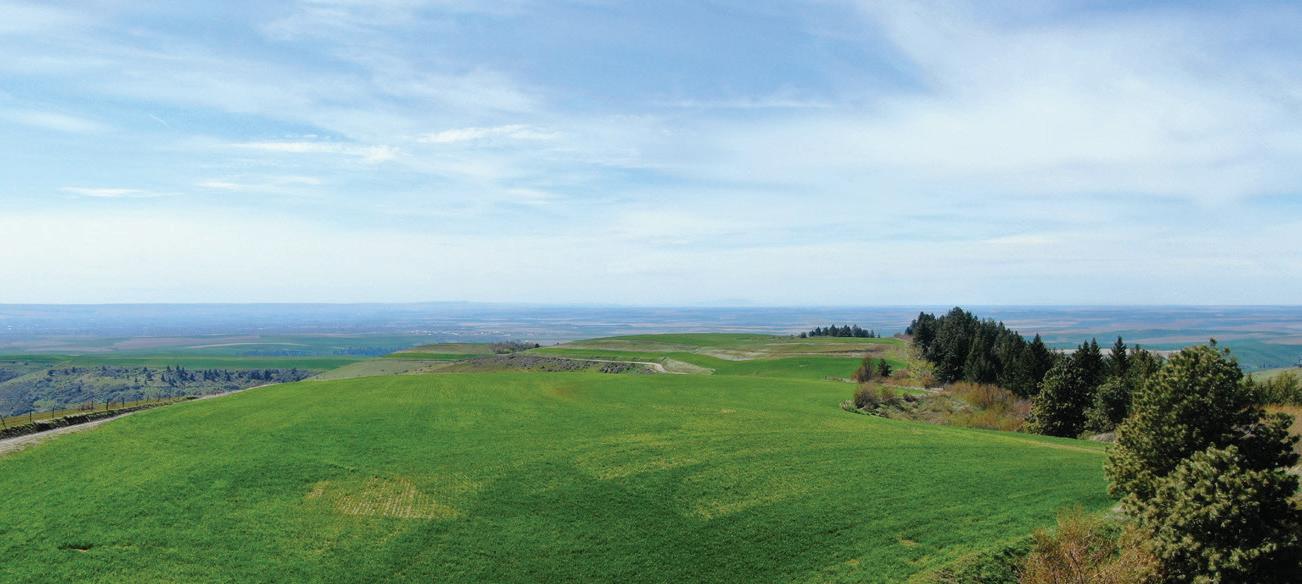




This is how Jeff Middleton, co-founder of Boise Vertical Farm, describes the partnership between sustainable farming and the rehabilitation of people in the community.

Middleton and Crystal Spencer have witnessed the ways a second chance can affect a person. Though seemingly unrelated, the two Boiseans discovered the benefit of combining that interest with sustainable farming when they co-founded Boise Vertical Farm in 2019, a nonprofit that aims to give individuals in recovery from drugs and alcohol a second chance.
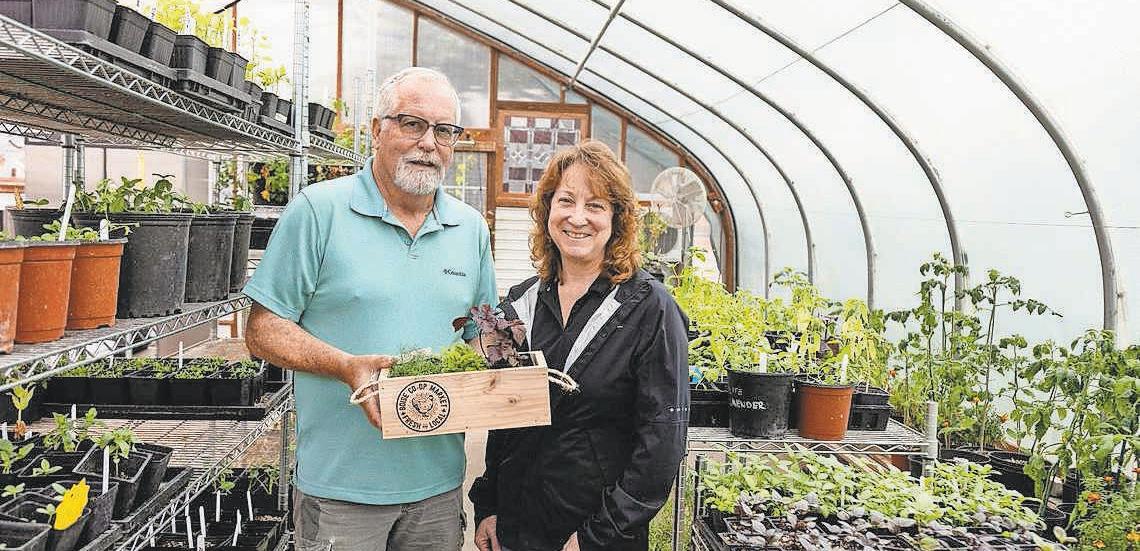
The pair met at St. Luke’s Boise Medical Center, where Spencer was the director of research and Middleton was recovering from substance abuse.
A pharmacist with a business degree who no longer wanted to work around drugs, and a researcher who lost a brother to alcoholism, they sought an answer to the same question: “So what else can we do?”
For Spencer, who has seen family members struggle to get back on their feet after leaving drugs and alcohol behind, that question extends far beyond recovery.
“When we see all this talent out there, and they can’t get reemployed, that’s a loss to the community,” Spencer said.
The idea for the farm started with a visit to Vertical Harvest in Wyoming in 2017. Vertical Harvest employs individuals with physical or intellectual disabilities.
“I got talking with Crystal; we decided to try to give this a chance here,” Middleton said.
In 2019, Middleton and Spencer rented the greenhouse that would become Boise Vertical Farm. It sits at 5810 Castle Drive in Boise on the property of Bill Wade, who leased it to the pair for the cost of utilities. The space includes outdoor garden beds extending from the greenhouse.
The name, Vertical Farm, describes the practice of growing crops in stacked layers. To further optimize plant growth, the

farm uses hydroponics, which omits soil and instead uses water-based solutions containing mineral nutrients the plant needs.
The farm grows a wide variety of produce, from mushrooms and microgreens to garden starts, herbs and edible flowers.
The idea to focus their new farm on helping those in recovery from substance abuse came from Middleton’s personal experience with recovery.
“I’ve been in recovery for 12 years,” he said. “But I noticed when I was coming through that there’s a significant gap in between the time that you get clean and the time that your life moves on. If you have a drug charge, if you have a record, it’s impossible to get hired. Nobody, nobody will hire you.”
An opportunity for growth and rehabilitation

Most of the people who end up working with Boise Vertical Farm are convicts who come through the court system. Depending on the judge or whether a convict comes through one of the county’s specialty courts, the offender might be referred to work at Boise Vertical Farm or choose it as one of many alternative sentencing options, according to Middleton.
The amount of time a convict must participate in community service is either decided by the judge or converted at a rate of eight hours per one day of jail. According to Middleton, they’ve seen people anywhere from four hours to 200 hours at a time.
So far this year, 24 of the 30 workers have come through the court system. The other six volunteer their time to help.
For those outside of the court system, Spencer hopes the future of Boise Vertical Farm will allow for a more permanent employment opportunity.

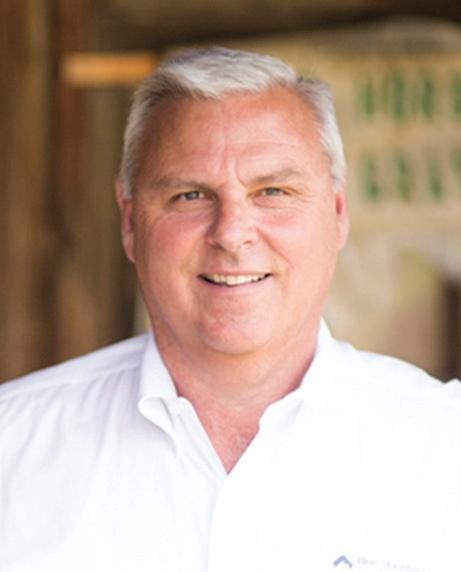
“In time, our goal is to have higher volumes of our operations so that we can truly employ them,” Spencer said. “Right now, we’re just not at that level of income yet.”
Spencer believes that having the farm as an option for someone moving through the court system can provide valuable experience that is not often found in other service tasks.
“A lot of people like this a whole lot

10 | Saturday, December 17, 2022 | MOSCOW-PULLMAN DAILY NEWS / LEWISTON TRIBUNE Northwest Farm and Ranch | WINTER 2022
co-founders
a nonprofit produce growing facility
accepts
Jeff Middleton and Crystal Spencer are
of
Boise-based Vertical Farm,
that
people
seeking court-ordered community service.
Miriam Grant Owner / Designated Broker 509-520-5220 Mark Grant ALC, Owner / Designated Broker 509-520-1906 Michael Grant Broker 509-520-0895 Mark Klicker Broker 509-520-7370 Happy New Year FROM OUR FAMILY — TO YOURS! Weinspecialize Farms, Ranches and Mountain Properties. 320 N. Colville, Walla Walla, Wa • info@northwestfirstrealtors.com 509-524-9055 NorthwestFirstRealtors.com FIRST REALTORS
Idaho Statesman
better,” Spencer said. “Partially, the environment is peaceful, it’s nice, but they’re actually kind of learning something a little bit more useful. I mean, picking up trash alongside the road, you know, it gets your hours served, but it doesn’t really gain them anything beyond that.”
Boise Vertical Farm supports its workers toward the next step in their careers past the completion of their service requirements. Middleton says the farm has connections with employment services to help people find jobs, as well as connections with Treasure Valley Community College and Boise State University for those who wish to continue their education.
“Our success rate as far as staying clean, and, you know, maintaining and being able to move on is way above 80%, 85%,” Middleton said. “They’ve been able to go out and talk to people and tell them what they’re doing … and they’ve been successful in getting work.”
Some of the farm’s volunteers from the court system have continued volunteering after completing their court-mandated hours, which Spencer says is a result of the support they receive from other volunteers.
“I hear them talking among themselves about, ‘Oh, I’m at this phase of the program,’ or ‘I’m at that phase of the program,’ and you have somebody else who’s here working who’s farther along, they’re like, ‘just stick with it,’ ” Spencer said. “That support aspect, (or) what I’ve witnessed, seems to be a really nice kind of little network that they’ve had come out of it.”
Boise Vertical Farm’s mission sparks community involvement
Middleton said he’s found additional volunteers through people he’s met at farmer’s markets.
“We have people who are relatives, parents and the like who have people in their family who have had problems with drugs and alcohol that want to understand what addiction is all about, want to give back, want to help others,” Middleton said. “A lot of it has to do with a sense of community and wanting to help.”
One of the farm’s volunteers, however, cited an additional motivation for helping Middleton and Spencer with their mission: tomatoes.
“I want you to put this in quotes,” Hal Spencer said, prompting laughter from Middleton as he referenced an old inside joke. “I have not had success growing tomato plants since I’ve lived in Idaho. I want to know why, and Jeff is helping me unravel that mystery.”
After four years of volunteering with the Idaho Suicide Prevention Hotline, Hal Spencer (not related to Crystal
Spencer) met Middleton at the Sunday farmer’s market on 36th Street.
“My wife and I went there to check it out for the first time, and that’s where I met Jeff,” Hal Spencer said. “He had a little booth there … and we got into a great conversation. I was in transition looking for another opportunity to help pay it forward, and here I am.”

Hal Spencer began working with Boise Vertical Farm in March and volunteers twice a week.
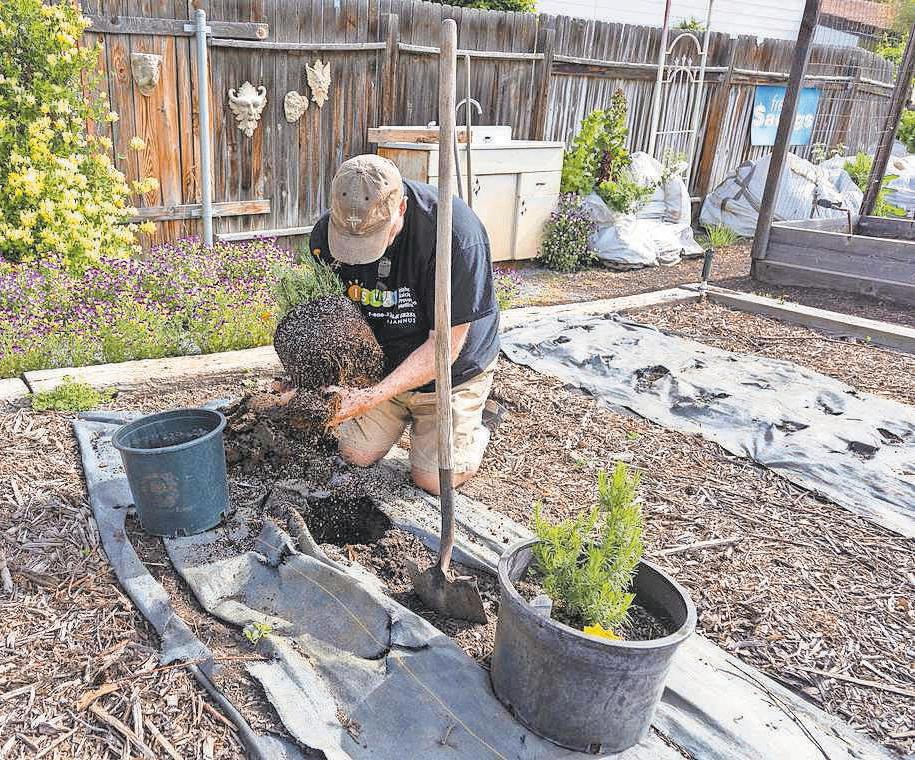
Just a year after opening, the farm faced an unexpected obstacle in 2020.
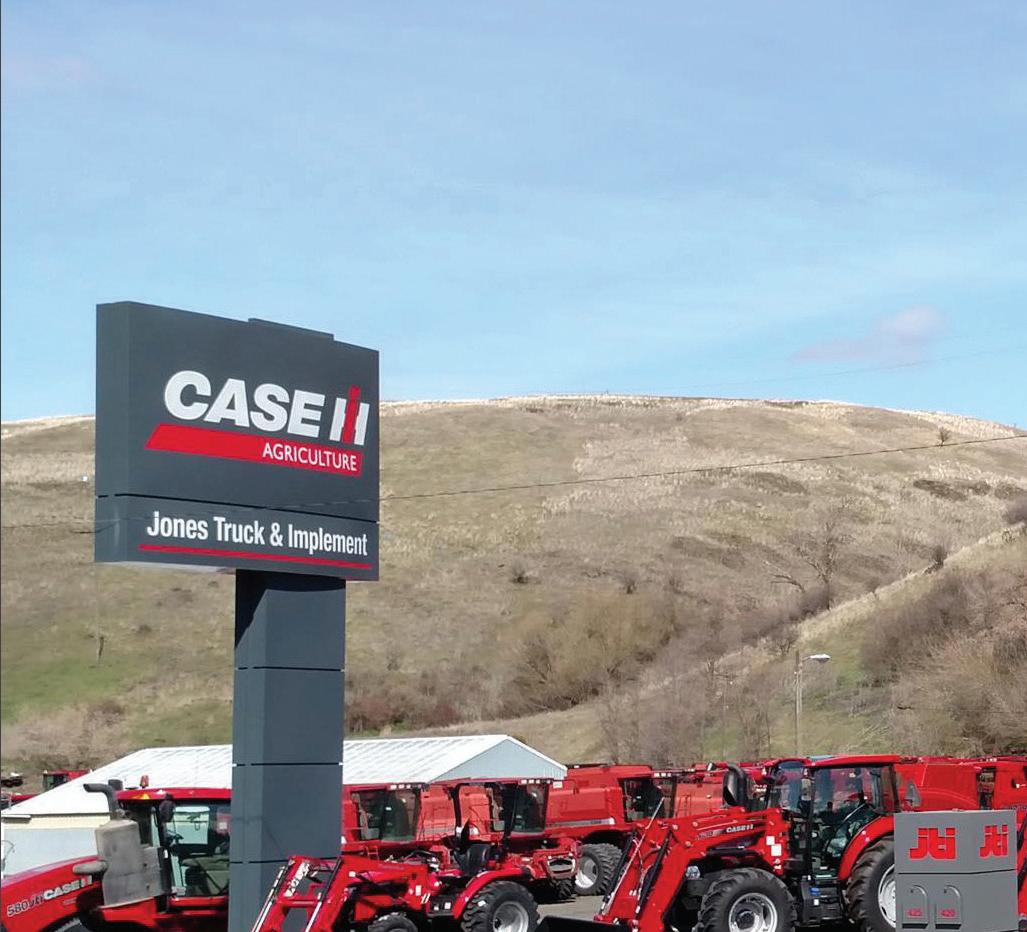
“We were almost exclusively selling to restaurants, so (COVID-19) pulled the rug right out from under us,” Middleton said.


The farm has two other partner grower locations in Boise: Diamond V and Be Local Farms, the latter of which is an aquaponics farm where fish waste is used to grow lettuce and other leafy greens.

“We found that we were very limited in our options for growing-space expansion, so we formed a partnership with these two for-profit growers (who) had available greenhouse and outdoor space,” Middleton said by email. “There isn’t much profit in small-business farming, so our partner farmers essentially donate their efforts and time to Boise Vertical Farm. They have been very generous to us and believe in our mission.”
Boise Vertical Farm pays its partners a percentage of the proceeds from what it grows on their farms.

“The people that come in through the program will work here or they can work there as well, depending on where they live and what they enjoy doing,” Middleton said.
What makes Boise Vertical Farm sustainable?
The hydroponics farm uses only 10% of the water that surface gardening or farming does, which saves water and land, according to Middleton.
Boise Vertical Farm’s products are available in local farmer’s markets, including the Meridian Main Street Market on Saturdays and the 36th Street Sunday Market in Boise. The Boise Co-op sells Boise Vertical Farm baskets. Customers can also buy produce through the farm’s website.

“All that money, all the money that goes from those sales comes back into the system and is used to expand and help more people,” Middleton said.
It’s also possible that you may have come across the work of volunteers at Boise Vertical Farm without buying from it directly. The farm sells its produce to several restaurants and caterers including Vintage ‘61 Wine Bar & Kitchen in Meridian, The Lively in Boise and Hudson Bakery Co. in Kuna.
MOSCOW-PULLMAN DAILY NEWS / LEWISTON TRIBUNE | Saturday, December 17, 2022 | 11 Northwest Farm and Ranch | WINTER 2022
Hal Spencer started volunteering at Boise Vertical Farm after learning about the farm’s mission to employ community members recovering from substance abuse.
Sales: Dan Helbling 509-336-1346 Nic Mayer�������������� 509-385-3895 Tyler Eistad 509-956-3120 Rena Olsen 509-956-3110 See our inventory online at www.jtii.com 425 Hwy. 26, Colfax 509-397-4371 | 1-800-831-0896 304 N 9th Ave., Walla Walla 509-525-6620 | 1-800-525-6620 TWO AREA LOCATIONS TO SERVE YOU: COME TO JONES TRUCK & IMPLEMENT FOR ALL OF YOUR NEW AND USED TRACTOR & OTHER AGRICULTURAL EQUIPMENT NEEDS! JONES TRUCK & IMPLEMENT Our knowledgeable and friendly staff will help you find the equipment & parts that are right for your needs. Come see us today! Jones Truck & Implement is the area’s authorized Case IH, GVM Sprayers and Mahindra dealership. 620846L
Idaho Statesman
Cosmic Crisp harvest reaches new heights
In its third year on the market, apple created by WSU has its biggest haul so far
By Emily Pearce For Farm & Ranch
AWashington
State University
apple has become a rising star among the many varieties on the market, but its success didn’t happen overnight.
Another batch of Cosmic Crisp apples hit stores on Dec. 1, marking its third year on the market. Its return to the produce section was delayed this season because of a cold spring, said Kate Evans, WSU professor and apple breeder, but even with this tribulation, the variety still saw a prosperous yield.
Producers gathered around 5 million 40-pound boxes of the apple this year, according to Proprietary Variety Management’s harvesting data. Proprietary Variety Management oversees licensing and operations of the Cosmic Crisp’s production. The assortment surpassed its 2021 yield by more than a million boxes, making it the largest Cosmic Crisp harvest ever.
Evans said this yield can be attributed to a steady increase of trees being planted annually. Around 20 million Cosmic Crisp trees have been planted in Washington as of 2022. Around 17 million apple trees were growing in the state as of 2021. This increase is huge, Evans said, pointing out the first Cosmic Crisp tree was commercially planted in 2017.
Although the apple has been on the market for a short time, the variety has taken more than two decades to develop. Cosmic Crisp was bred by now-retired horticulturist Bruce Barritt at WSU’s Wenatchee research station in 1997. Evans took over the operating program in 2008 when Berritt retired. She and her team cultivated the WA 38 apple variety by breeding and planting strong variants for years until a sound product was created.
Twenty years may sound like a long time, but Evans said it’s typical. She added it all depends on how much evaluation is done; a good variety takes a long time to develop and “weed out” any fatal flaws.
“It takes a lot of evaluation to become confident in the crop, but
Workers
Crisp apples, a new variety and the first-ever bred in Washington state, in an orchard
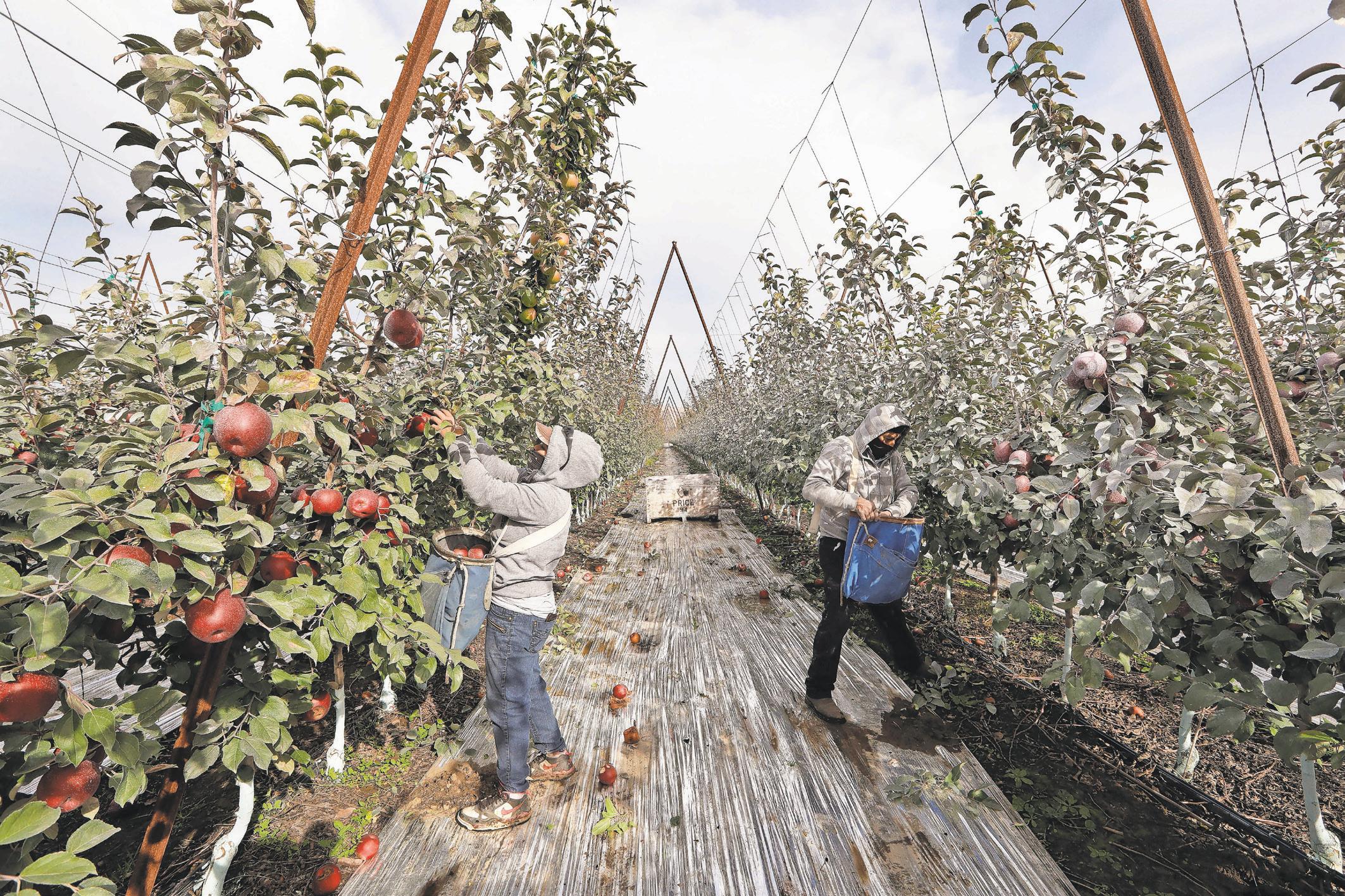
Wapato, Wash. The grayish coating on some of the trees and apples is from kaolin clay, used to protest the fruit from sunburn. The Cosmic Crisp, available beginning Dec. 1, is expected to be a game changer in the apple industry. Already, growers have planted 12 million Cosmic Crisp apple trees, a sign of confidence in the new variety.
ultimately it finds its way to the hands of the consumer and ideally is encouraging them to eat more fruit,” Evans said. “And you know, who could really want more than trying to improve the health of the population?”
Cosmic Crisp was first available to consumers in 2019 and has since been distributed to grocery stores nationwide. The apple is a cross between the Honeycrisp and Enterprise apple varieties; Evans said it’s a good balance of sweetness and tartness. She added it has a good level of firmness and produces a very juicy eating
experience. The reason why Cosmic Crisps stand out from other varieties is because it has a good level of sugar and acidity, according to Evans.
Though her work with the Cosmic Crisp has come to an end, Evans is still researching and breeding new apple varieties. She can’t reveal many details, but the program has a new elite apple that is being developed. She said she’s excited to see where she and her team go with the next apple.
Pearce can be reached at epearce@dnews.com or on Twitter @Emily_A_Pearce.
In this file photo, a worker moves bins of Cosmic Crisp apples into a cold storage facility in Yakima. The Cosmic Crisp had its best year ever in its young life this year.
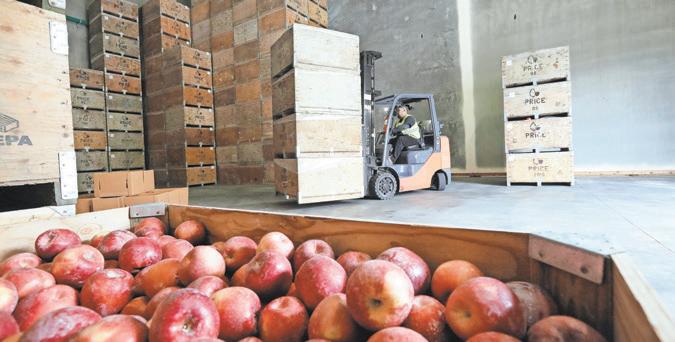 Associated Press
Associated Press
12 | Saturday, December 17, 2022 | MOSCOW-PULLMAN DAILY NEWS / LEWISTON TRIBUNE Northwest Farm and Ranch | WINTER 2022
Edilia Ortega, left, and Reynaldo Enriquez pick Cosmic
in
Associated Press















 By Elaine Williams For Farm & Ranch
By Elaine Williams For Farm & Ranch








 Frank/Farm & Ranch
Frank/Farm & Ranch







 By Kathy Hedberg For Farm & Ranch
By Kathy Hedberg For Farm & Ranch






 Meranda Small, a 2004 Grangeville High graduate, is the new extension agent in Idaho County for the University of Idaho. Her area of expertise is beef cattle production.
Courtesy photo
Meranda Small, a 2004 Grangeville High graduate, is the new extension agent in Idaho County for the University of Idaho. Her area of expertise is beef cattle production.
Courtesy photo









 By Cindy Hval Spokesman-Review (Spokane)
By Cindy Hval Spokesman-Review (Spokane)



























 Associated Press
Associated Press